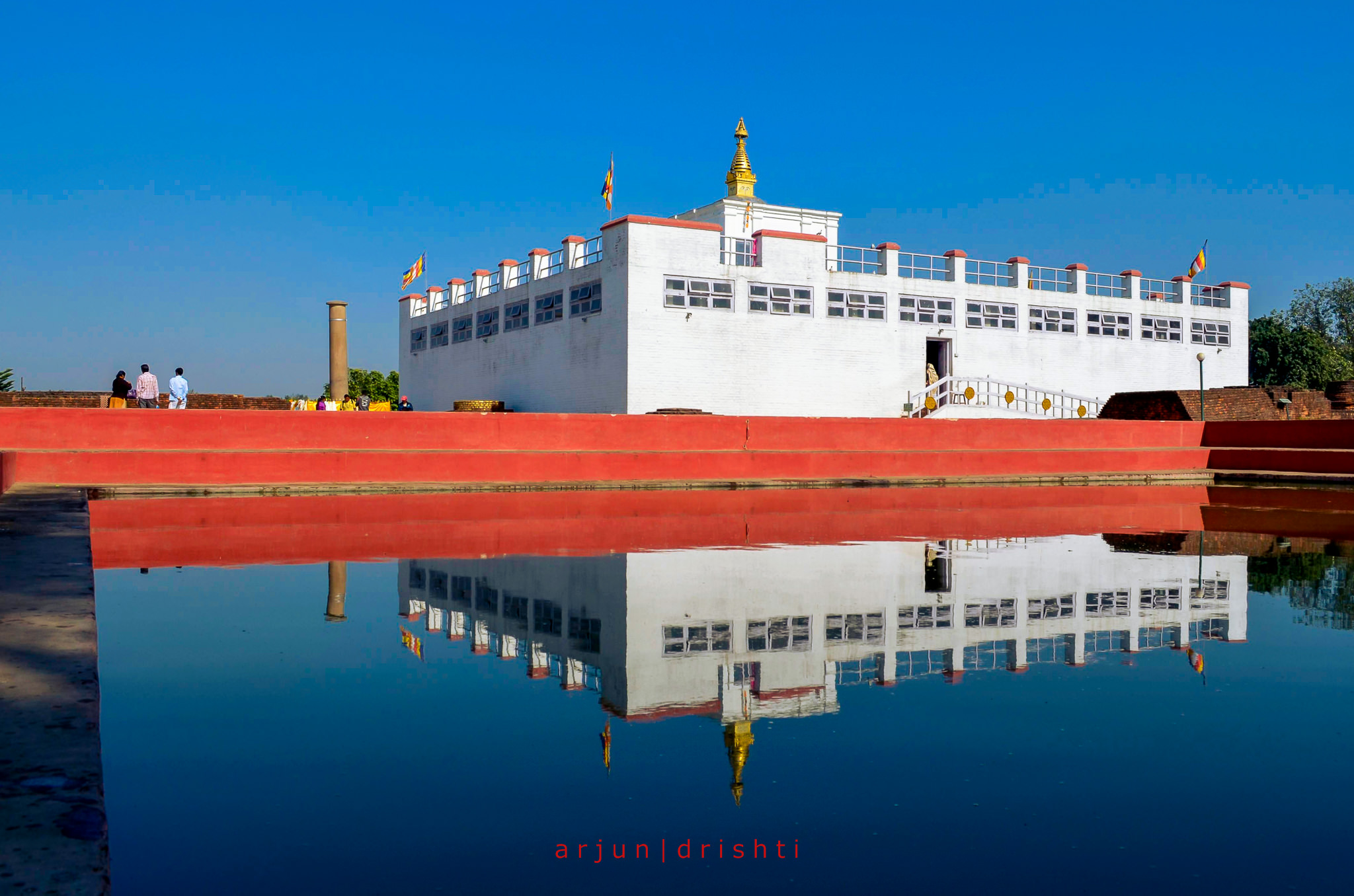History of Lumbini. borthplace of Buddha

Lumbini has been identified thanks to the Indian Emperor Ashoka, who visited the area in 248 BCE and erected a pillar with an inscription commemorating the birth of Siddhartha. He also built a wall around the village and ordered the building of four stupas to mark the spot. It is not absolutely certain that Siddhartha was actually born in Lumbini, but at least we know for certain that this was widely believed by the Buddhist community at the time of Ashoka and even earlier.
A Chinese pilgrim named Faxian (Fa-Hien, 337-c.422 CE) reports his visit to Lumini in 403 CE. In his work known as “A record of the Buddhistic kingdoms”, Faxian wrote:
Fifty le east from the city [Kapilavastu] was a garden, named Lumbini, where the queen [Maya] entered the pond and bathed. Having come forth from the pond on the northern bank, after (walking) twenty paces, she lifted up her hand, laid hold of a branch of a tree, and, with her face to the east, gave birth to the heir-apparent. When he fell to the ground, he (immediately) walked seven paces. Two dragon-kings [appeared] and washed his body. At the place where they did so, there was immediately formed a well, and from it, as well as from the above pond, where [Maya] bathed, the monks [even] now constantly take the water, and drink it.
(Faxian, Chapter 22)
About two hundred years later, Xuanzang (Hsüan-tsang, 602-664 CE), another Chinese pilgrim who also visited Lumbini, described a number of structures in the area including some monasteries and Ashoka's pillar, shattered by lightning and lying on the ground. The site was not as popular during this particular time as it once was, but it was not entirely forgotten either. During the the 9th century CE, the area became controlled by the Muslims and later by the Hindus: During this process, the Buddhist structures were destroyed and the memory of Lumbini was lost.
Maya Giving Birth to the Buddha
Maya Giving Birth to the Buddha
A German archaeologist named Alois Führer rediscovered Lumbini in 1895 CE. Führer unearthed some of the structures built by Ashoka as well as a temple which included scene’s of the Buddha’s life. During the 20th century CE, a number of excavations were carried out and many Buddhist structures were rediscovered. The area has been almost entirely restored during the last few decades. One of the main structures in Lumbini is the Mayadevi temple. The temple area covers the actual place where the Buddha was born, which is indicated by the marker stone, which was discovered in 1996 CE when the temple was excavated. The temple stands adjacent to the Holy Pond where the Buddha and his mother took their first bath.
Lumbini is today one of the four main pilgrimage places in Buddhism and is also an important place of pilgrimage for those Hindus who consider the Buddha one of the many manifestations of the god Vishnu. The place is also a UNESCO World Heritage Site.